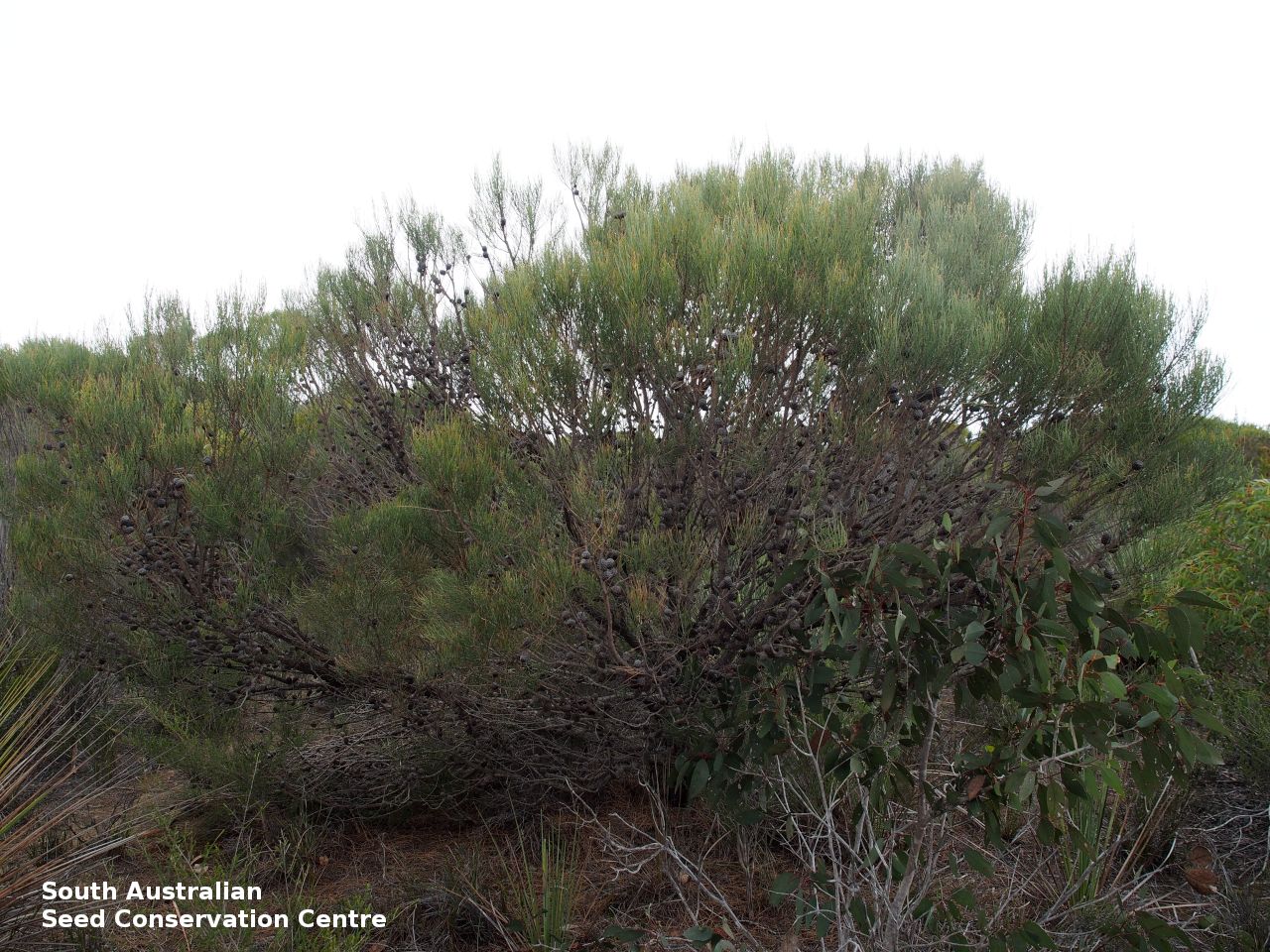
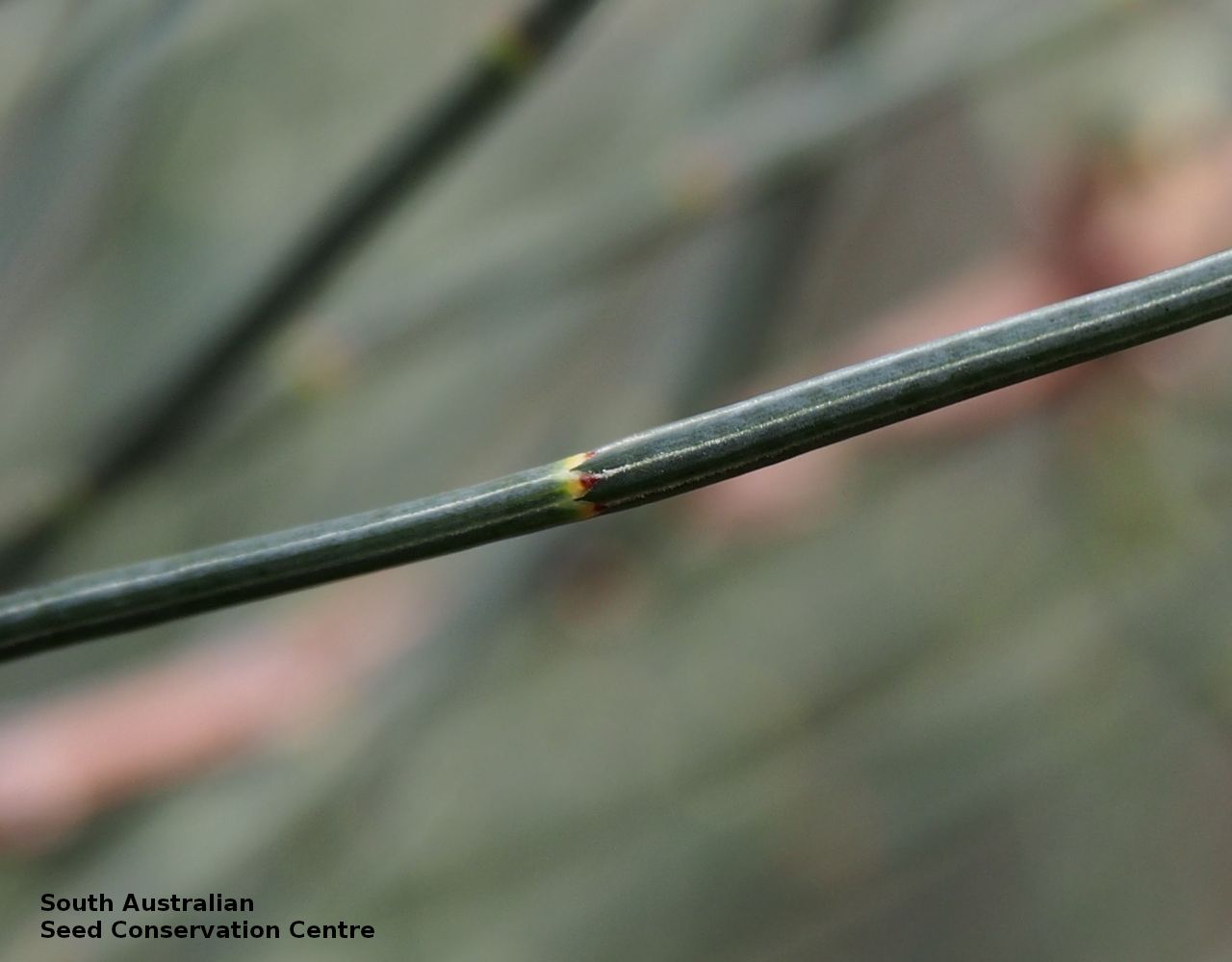
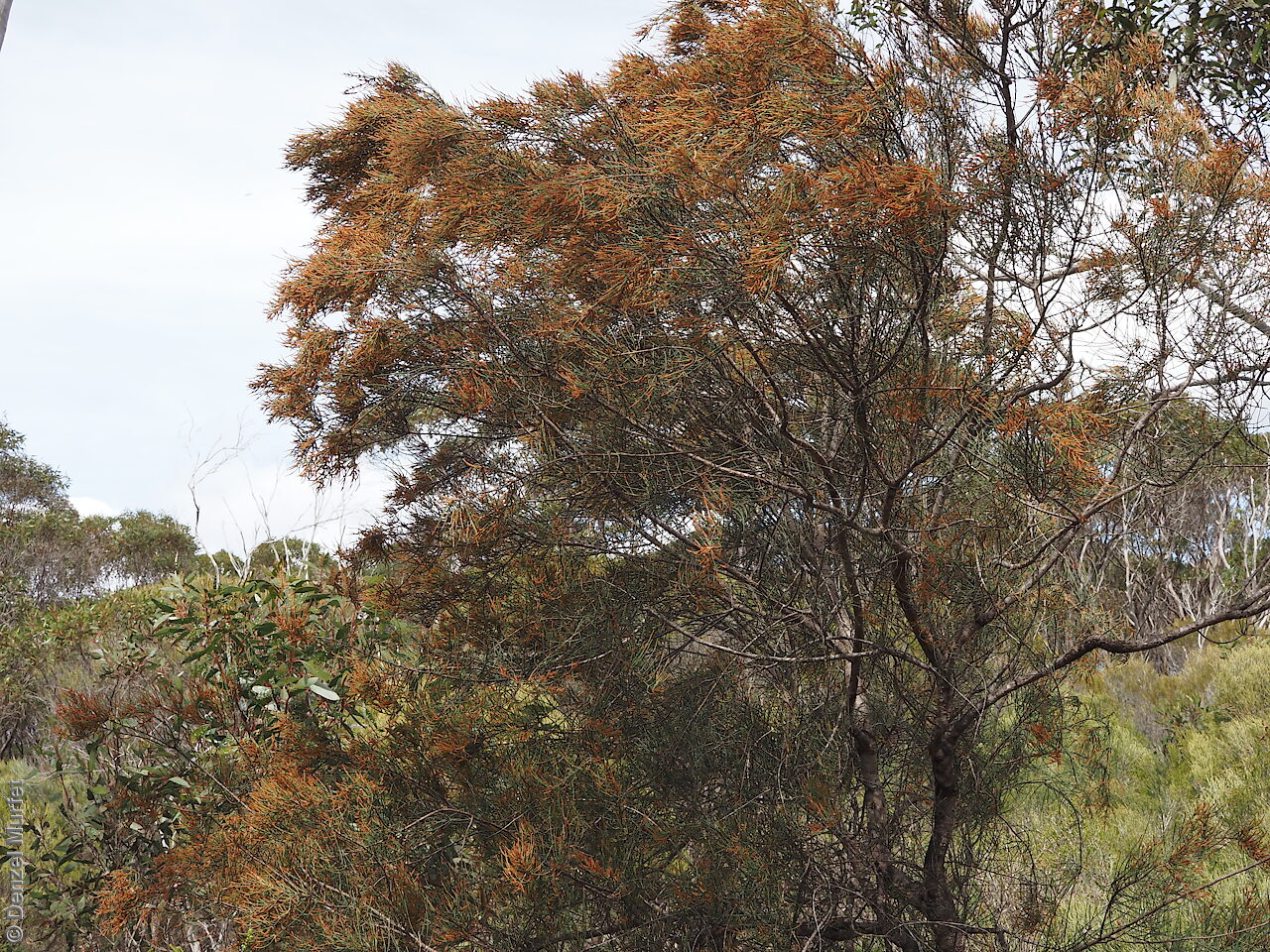
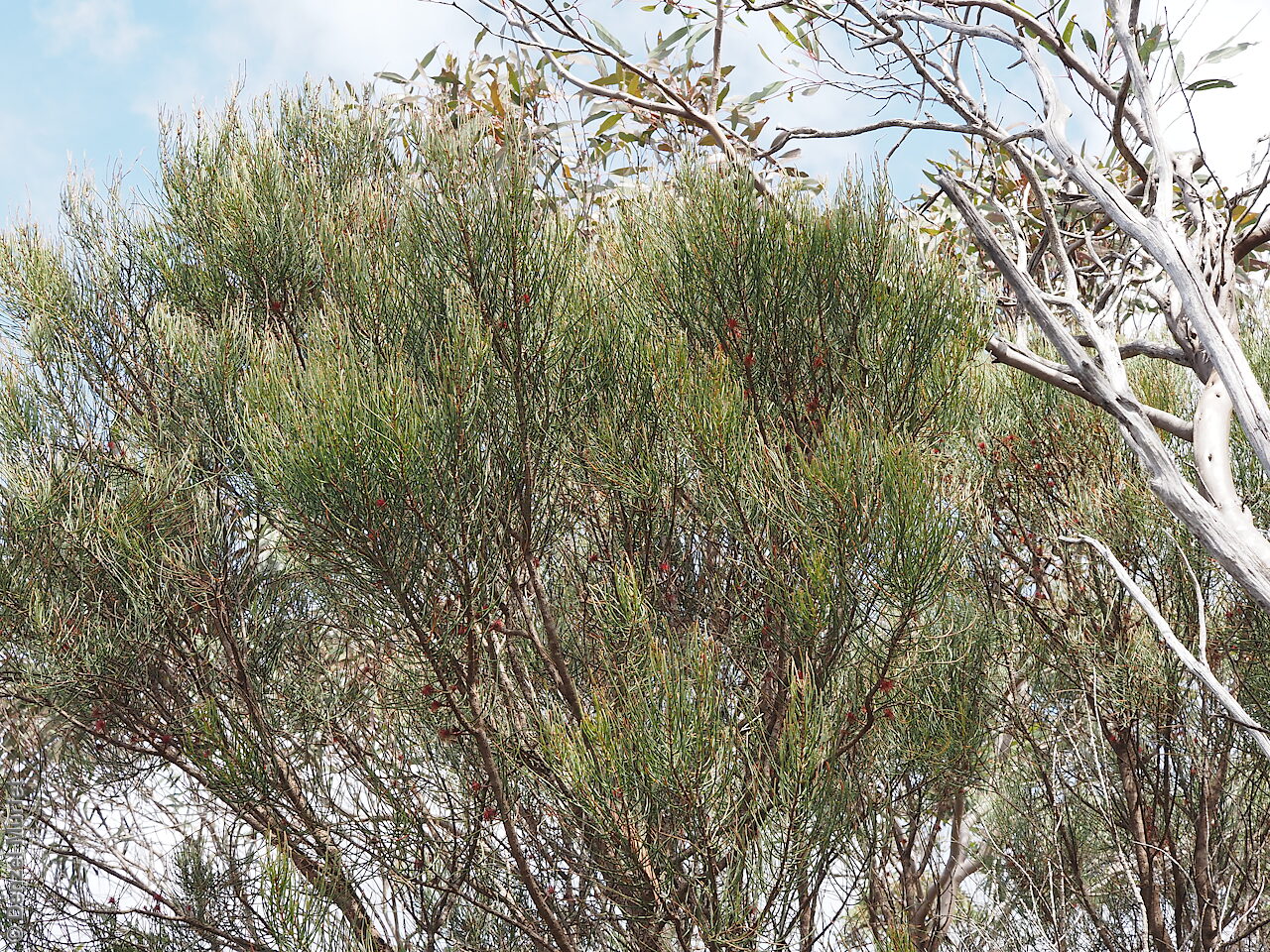
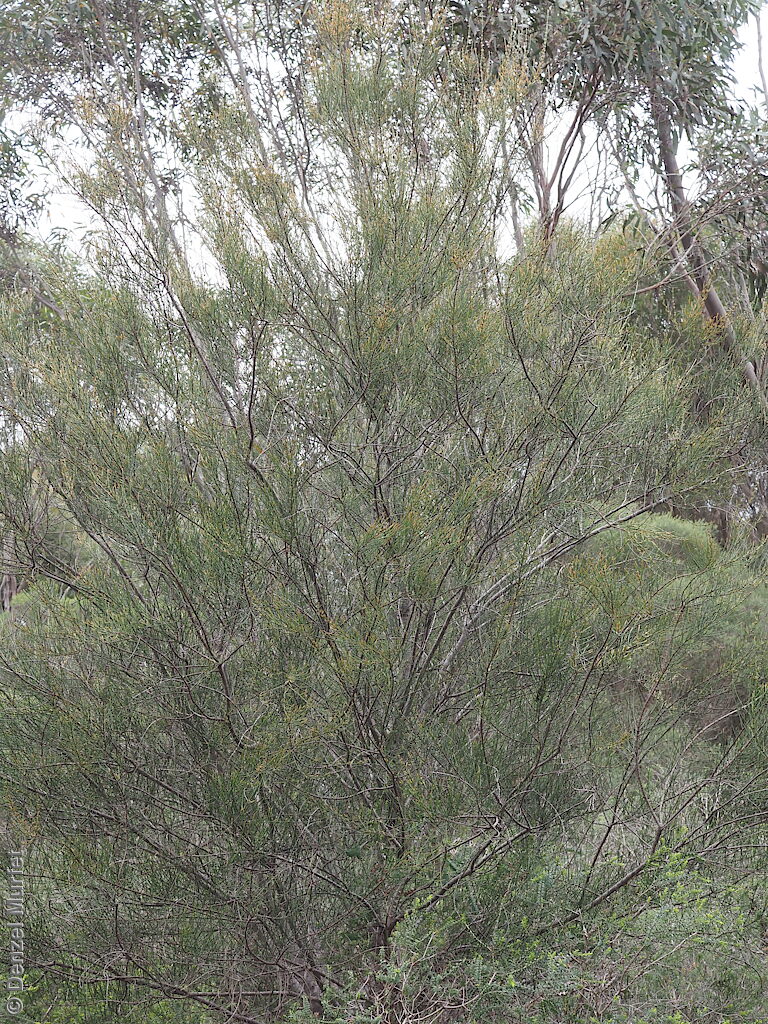
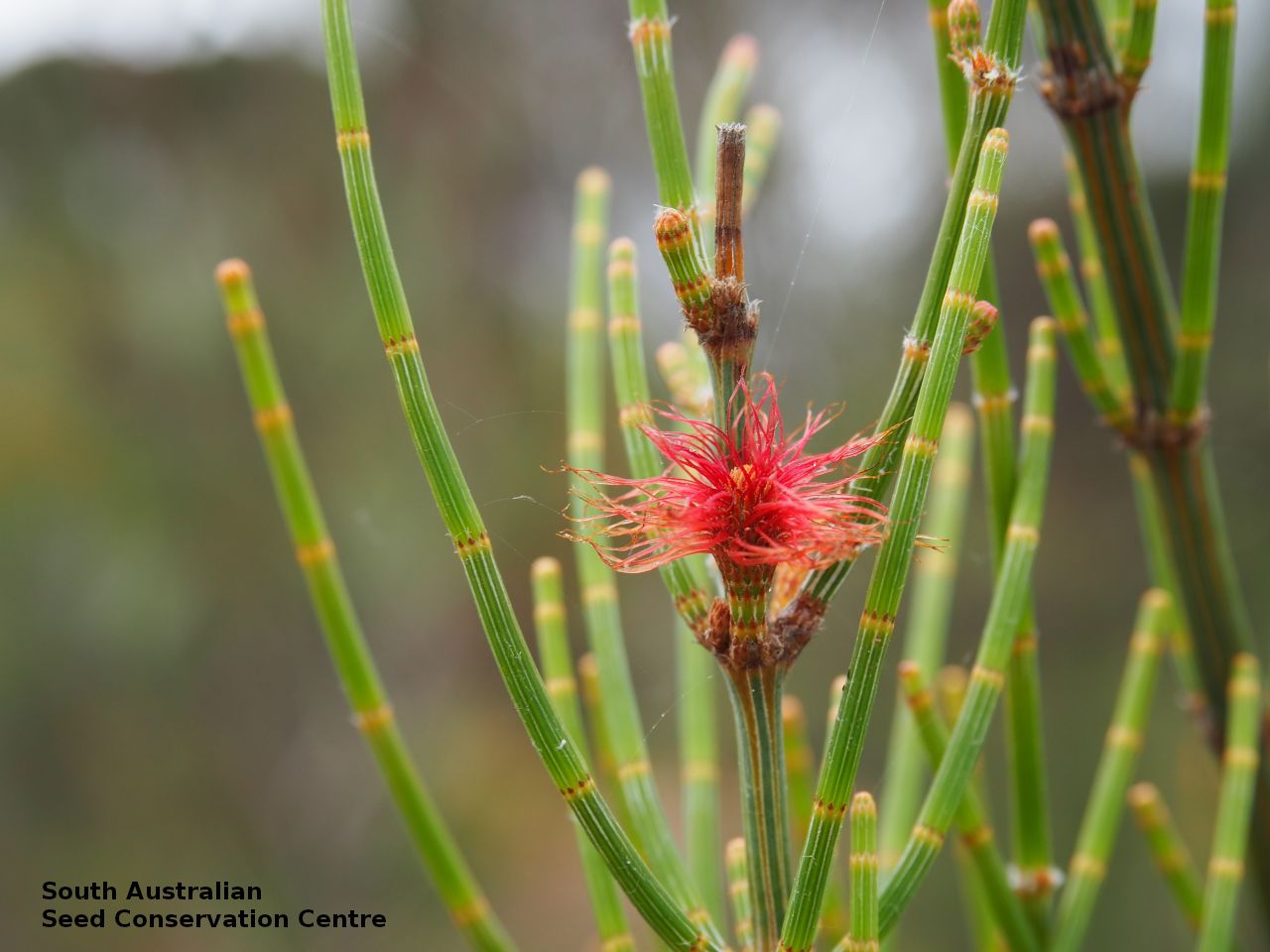
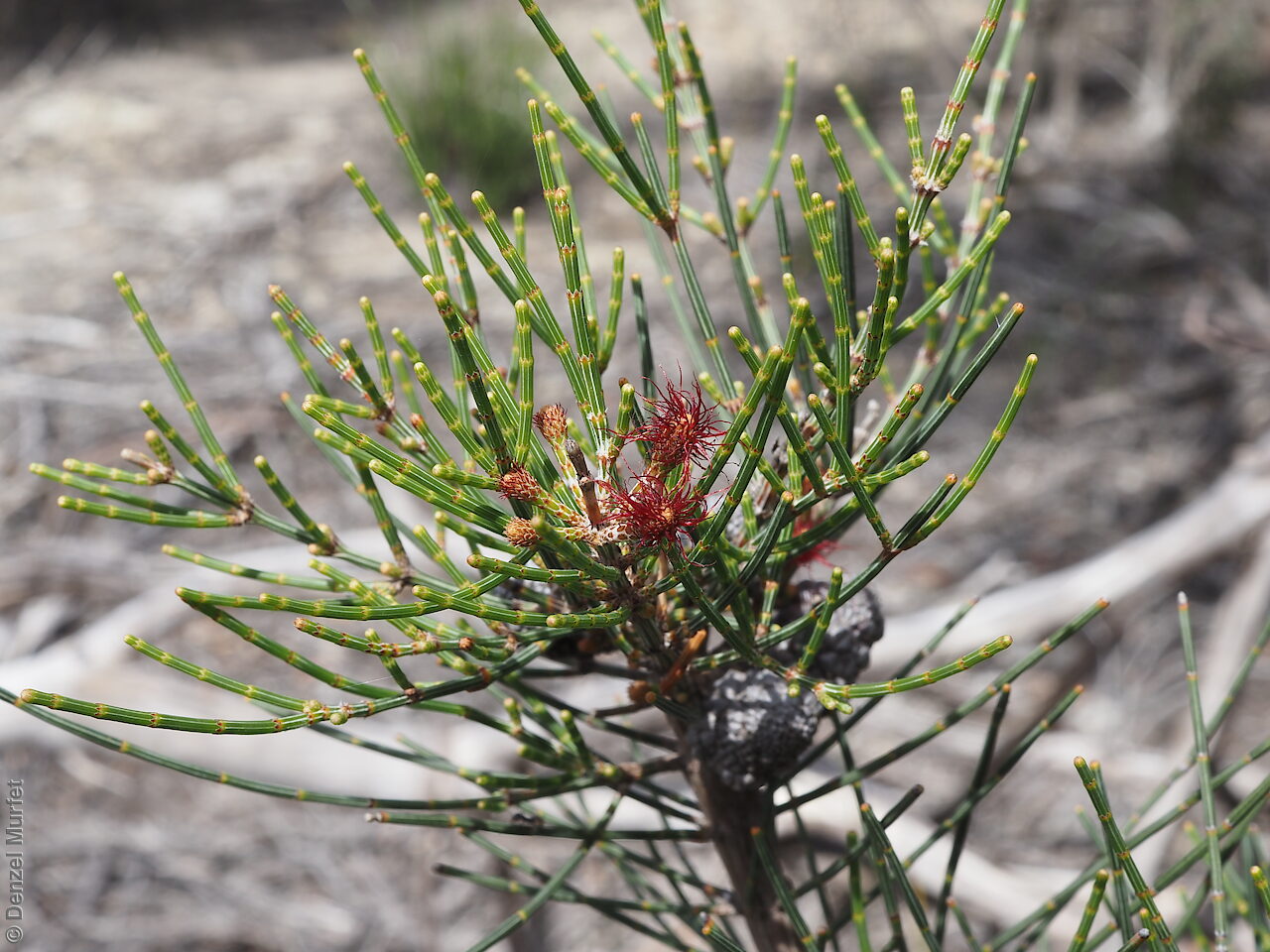
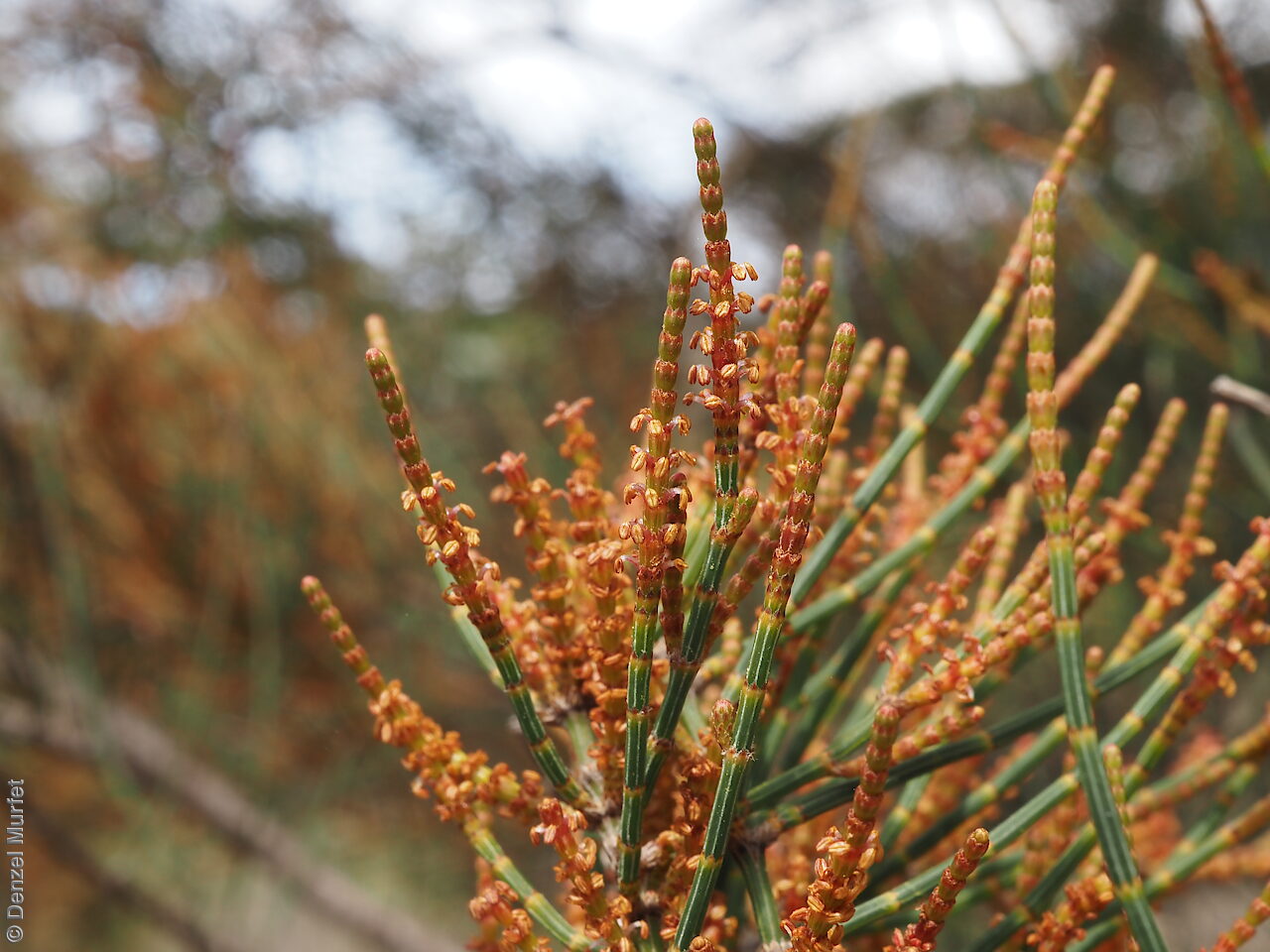
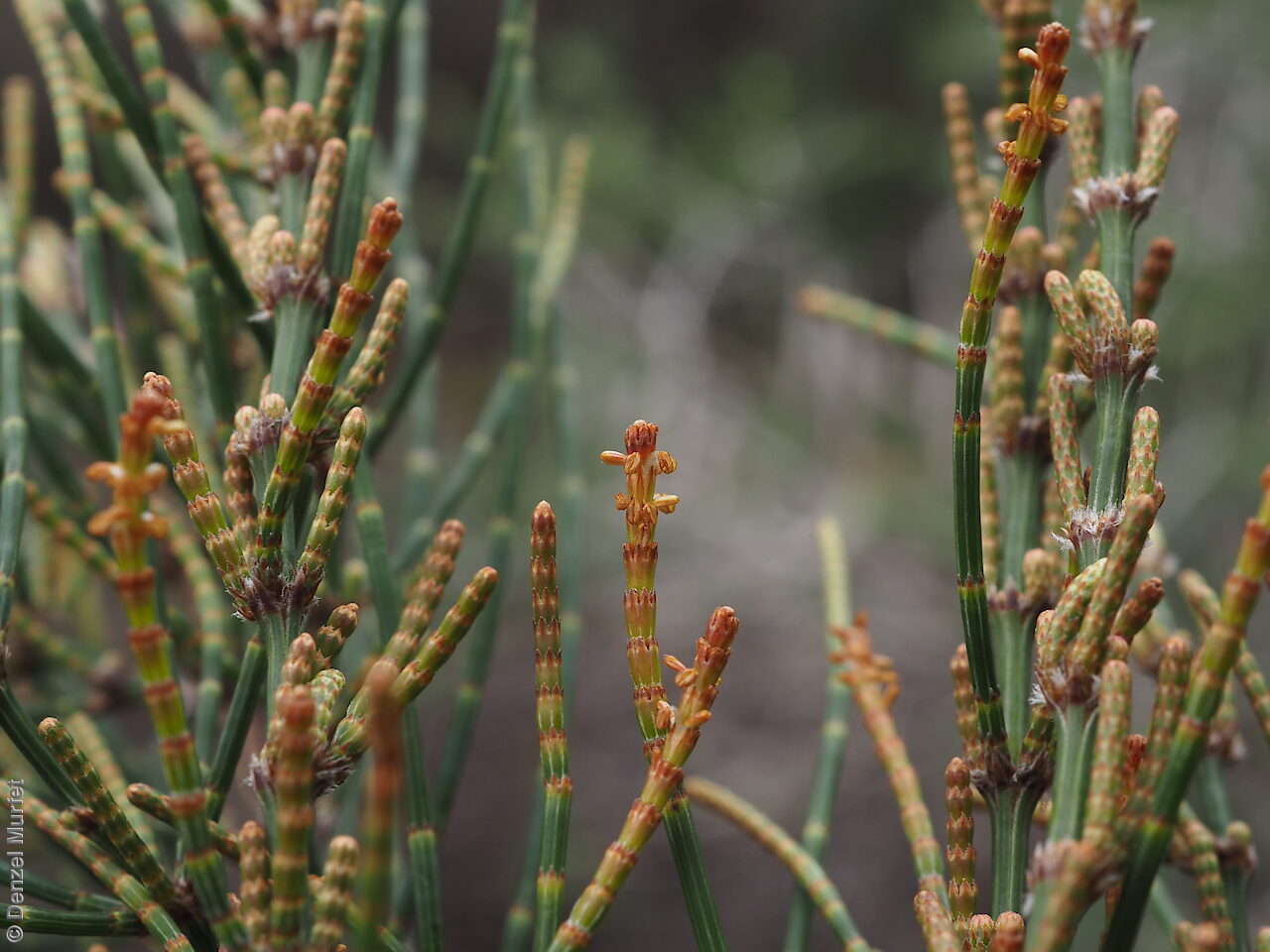

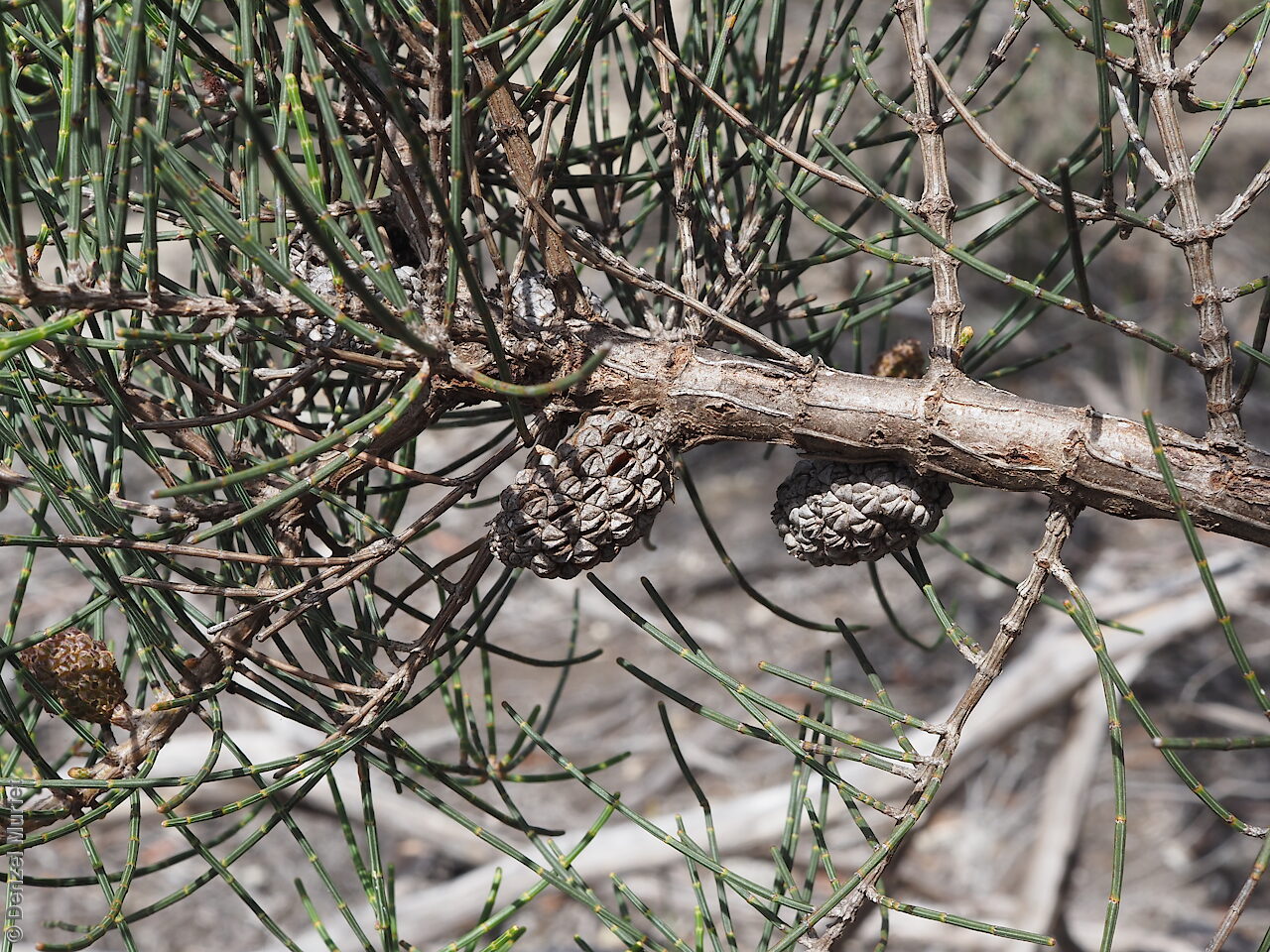
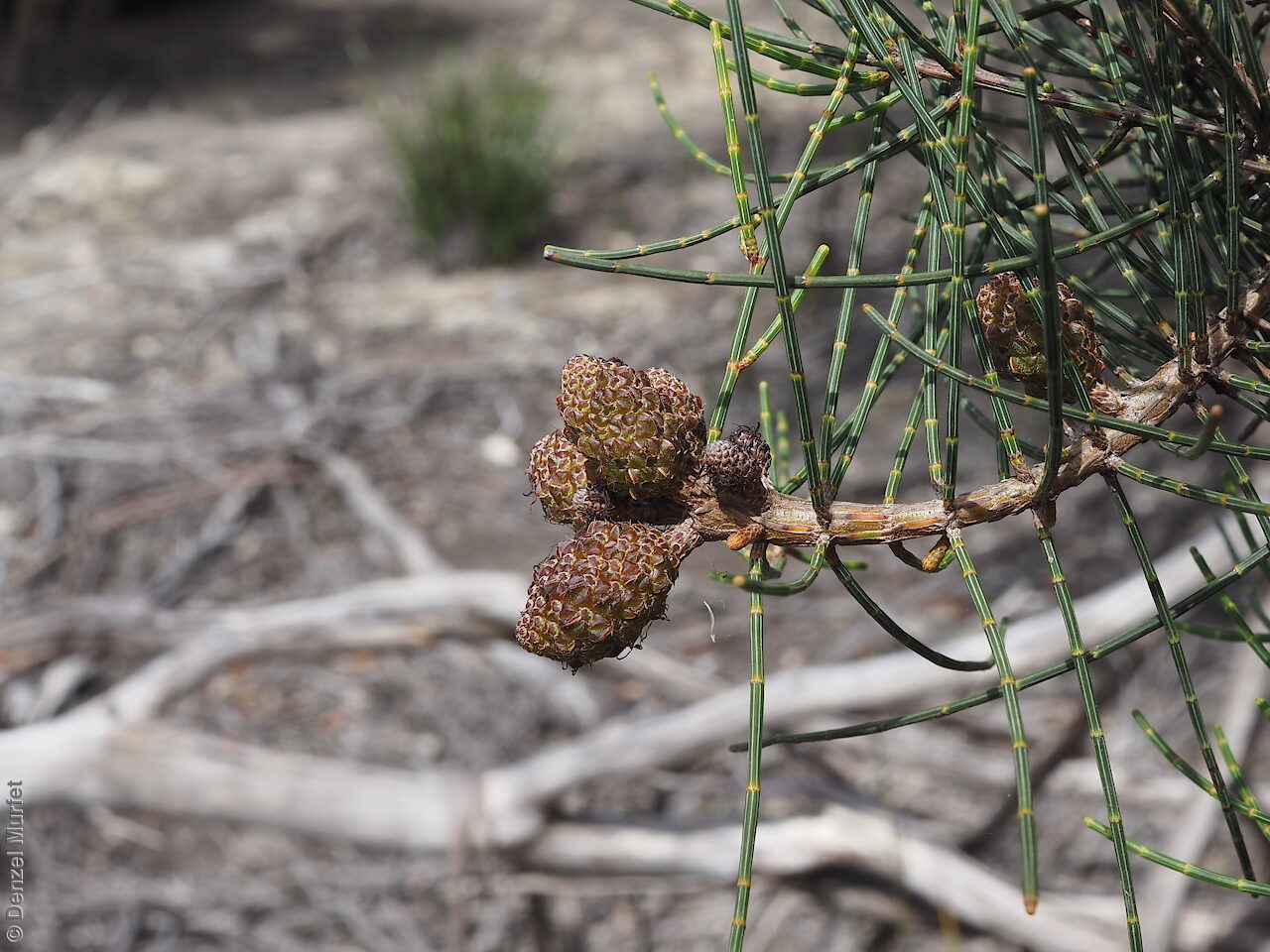
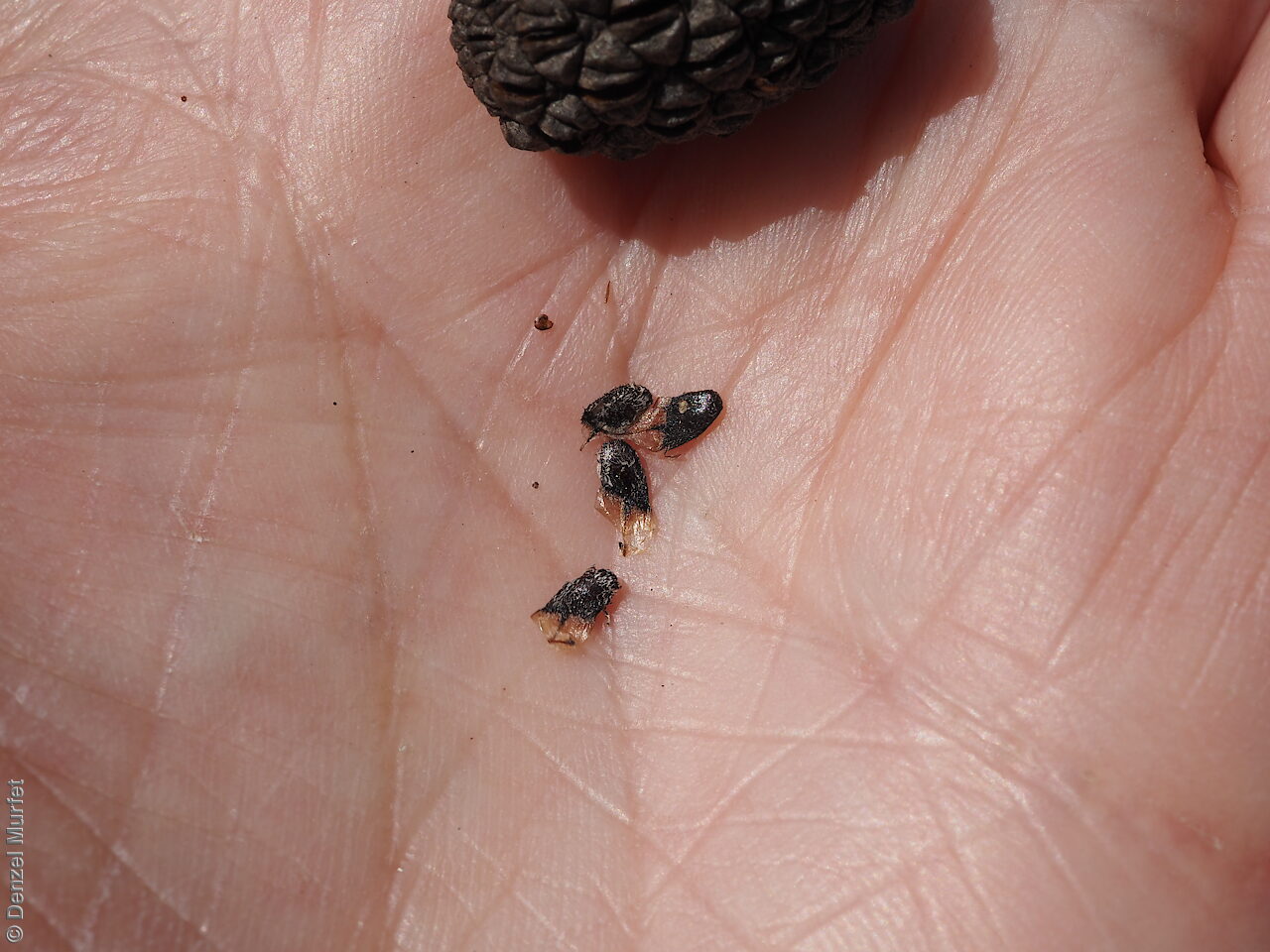
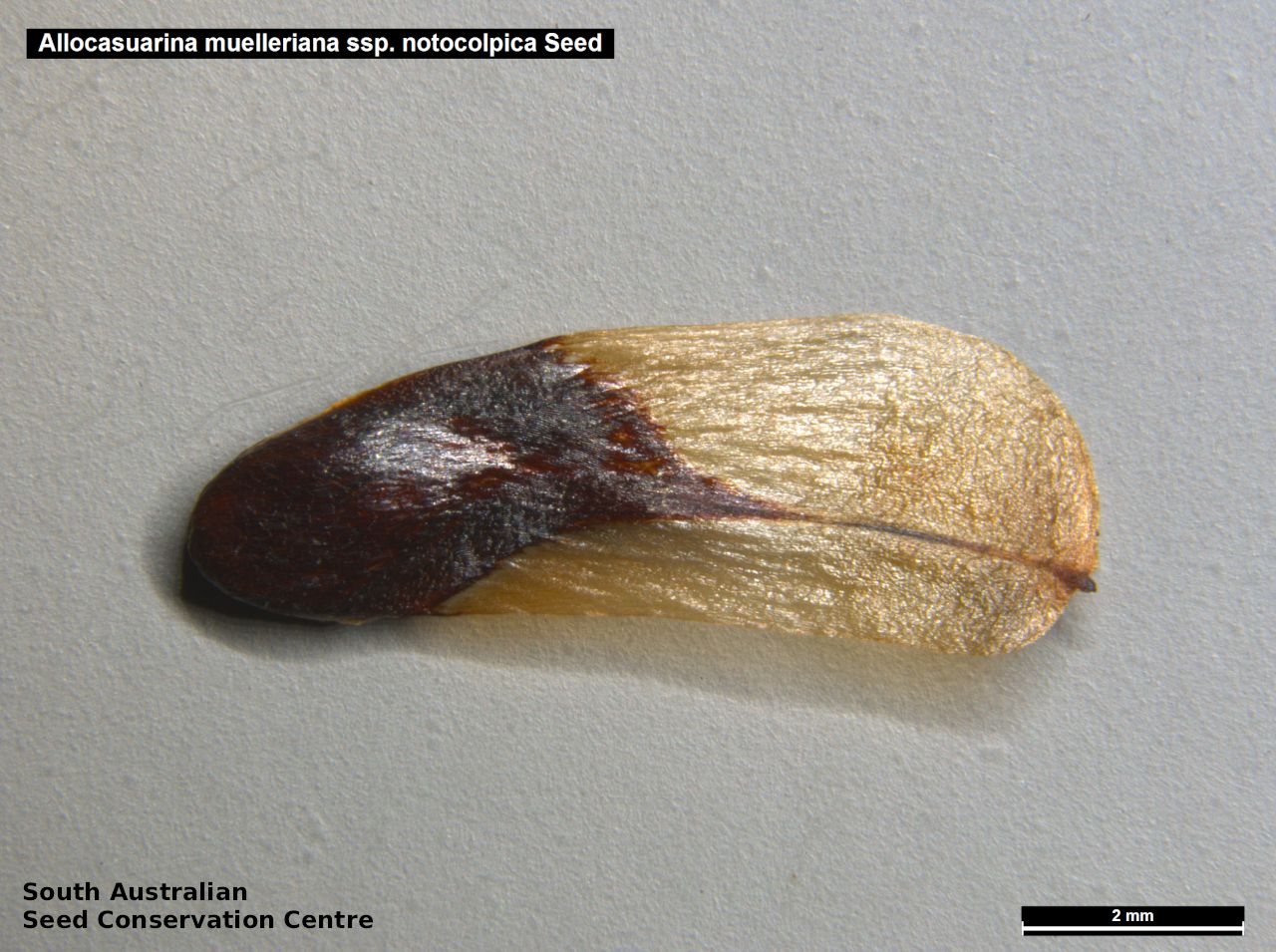
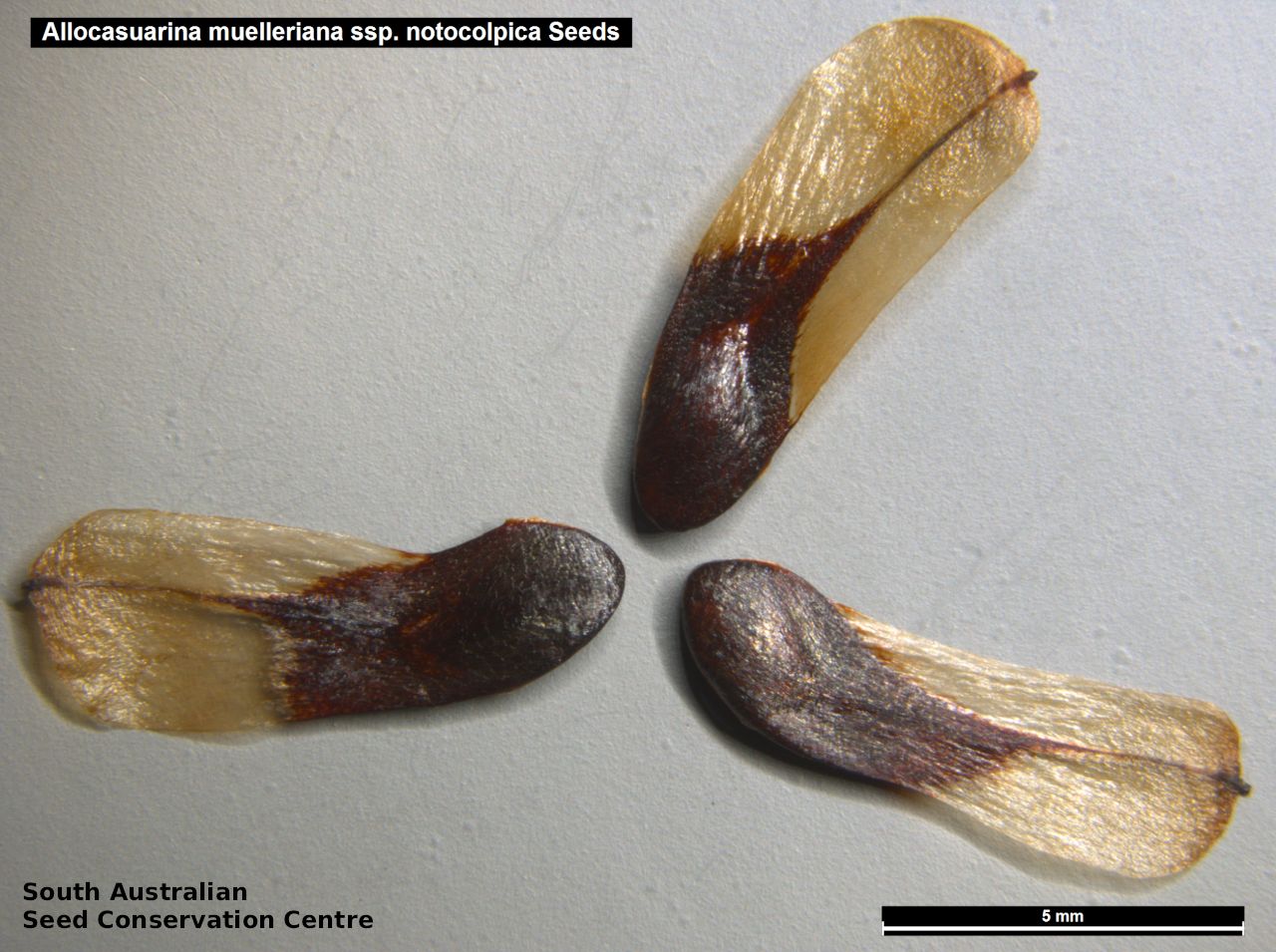
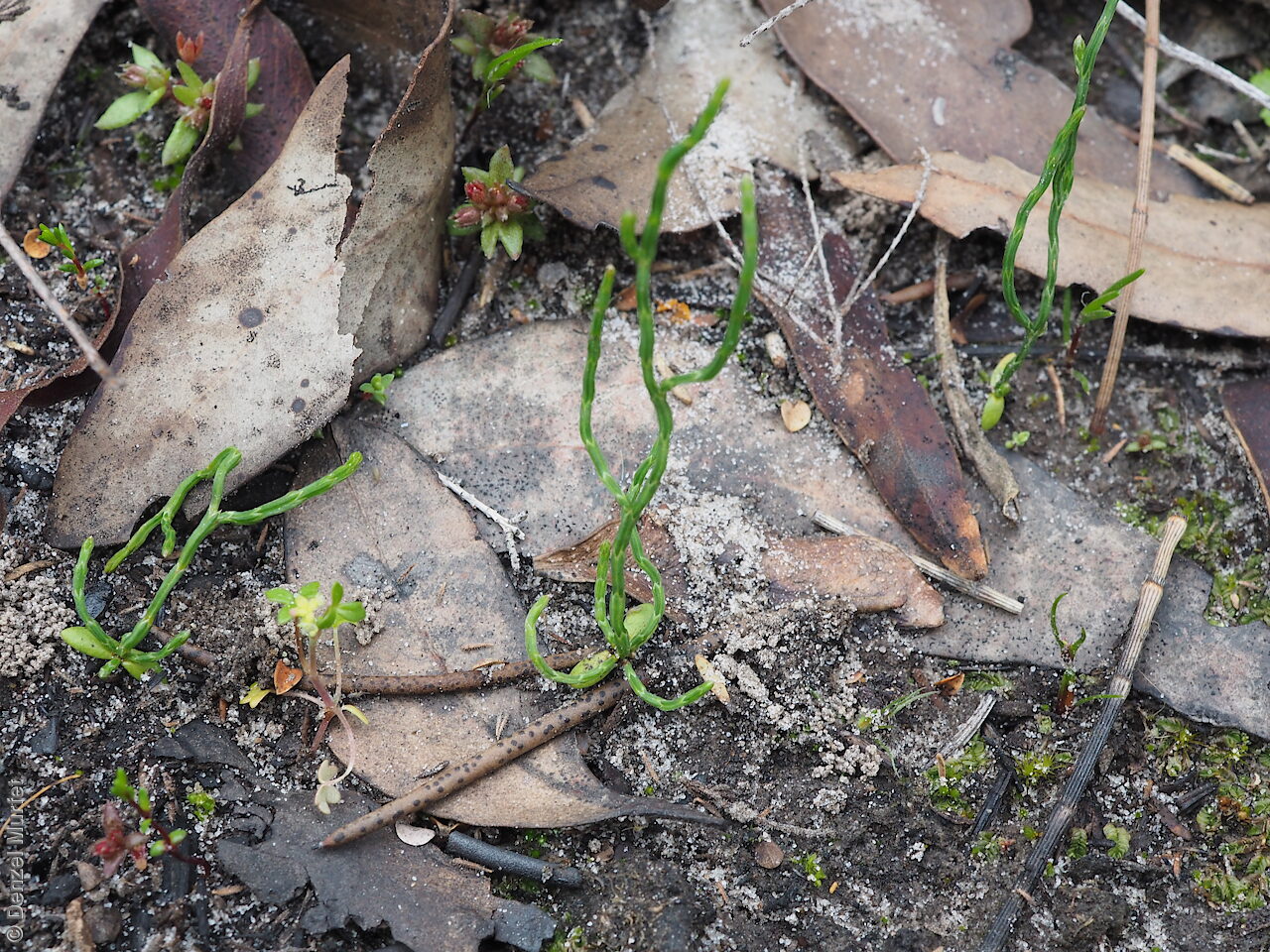


Common names
Kangaroo Island Oak-bush
Etymology
Allocasuarina from the Greek 'allos' meaning other or different, indicating the relationship with the genus Casuarina (first used by Rumphius (1743) in allusion to the supposed resemblance of the "foliage" of Casuarina equisetifolia to the plumage of the Cassowary, which is from the Malay 'kesuari', latter being latinised as Casuarius). Muelleriana named after Baron Ferdinand von Muller (1825-1896), botanist, plant collector and Government Botanist of Victoria. Notocolpica from the Greek 'notos' meaning south and 'kolpos' meaning a gulf; referring to its occurrence south of Gulf St Vincent and Spencer Gulf.
Distribution and status
Endemic to South Australia and found only on Kangaroo Island, growing in open woodland and shrubland on stony siliceous soils. Native. Common but restricted to Kangaroo Island.
Herbarium region: Kangaroo Island
AVH map: SA distribution map (external link)
Plant description
Dioecious or rarely monoecious shrub to 3 m high with smooth bark. Stem (looks like leaves) are ascending to 12 cm long with stem segments to 11 mm long and 1.1 mm diameter, usually angular, waxy, margins adjacent to furrows not raised, with 6 to 7 teeth (reduced leaves) to 0.6 mm long at segment junction. Male spikes resemble a necklace of beads, orange-brown. Female flowers singular, red. Cones on stout peduncle to 17 mm long and 4.5 mm diameter with cone body to 30 mm long and 18 mm diameter. This subspecies differ from the other two subspecies found in South Australia in that A. muelleriana ssp. muellerian have stem segments to 8 mm long and 0.8 mm diameter, cones with peduncles to 8 mm long and A. muelleria ssp. alticola which is endemic to the northern Flinders Ranges have stem segments to 7 mm long and 1 mm diameter, cones with peduncles to 3 mm and 2.5 mm diameter. Flowers throughout the year. Fruits are large woody cylindrical cone on stout peduncle with numerous valves. Seeds are dark brown to black, smooth and semi-flat to 5 mm long, with a long papery wing at one end. Seed embryo type is investing.
Seed collection and propagation
Collect seeds between January and December. Cones can be collected anytime as mature cones remain on the female plant. Collect cones that have closed valves from the lower part of the stem as these are more mature. Place cones in a tray and leave to dry for 2-3 weeks. This will allow the valves to dry and open releasing the seeds. Place the dried cones in a bucket and shake gently to dislodge the seeds. Use a sieve to separate seeds from the unwanted material. Store the seeds with a desiccant such as dried silica beads or dry rice, in an air tight container in a cool and dry place. Seed viability is usually high. Seeds are non-dormant, viable seed should germinate readily.
| Location | No. of seeds (weight grams) | Number of plants | Date collected | Collection number Collection location | Date stored | % Viability | Storage temperature |
|---|---|---|---|---|---|---|---|
| BGA MSB | 21,360 (57.5 g) 21,360 (57.5 g) | 12 | 16-Oct-2003 | PJA37 Kangaroo Island | 1-Sep-2004 | 85% | -18°C |
Number of plants: This is the number of plants from which the seeds were collected.
Collection location: The Herbarium of South Australia's region name.
% Viability: Percentage of filled healthy seeds determined by a cut test or x-ray.